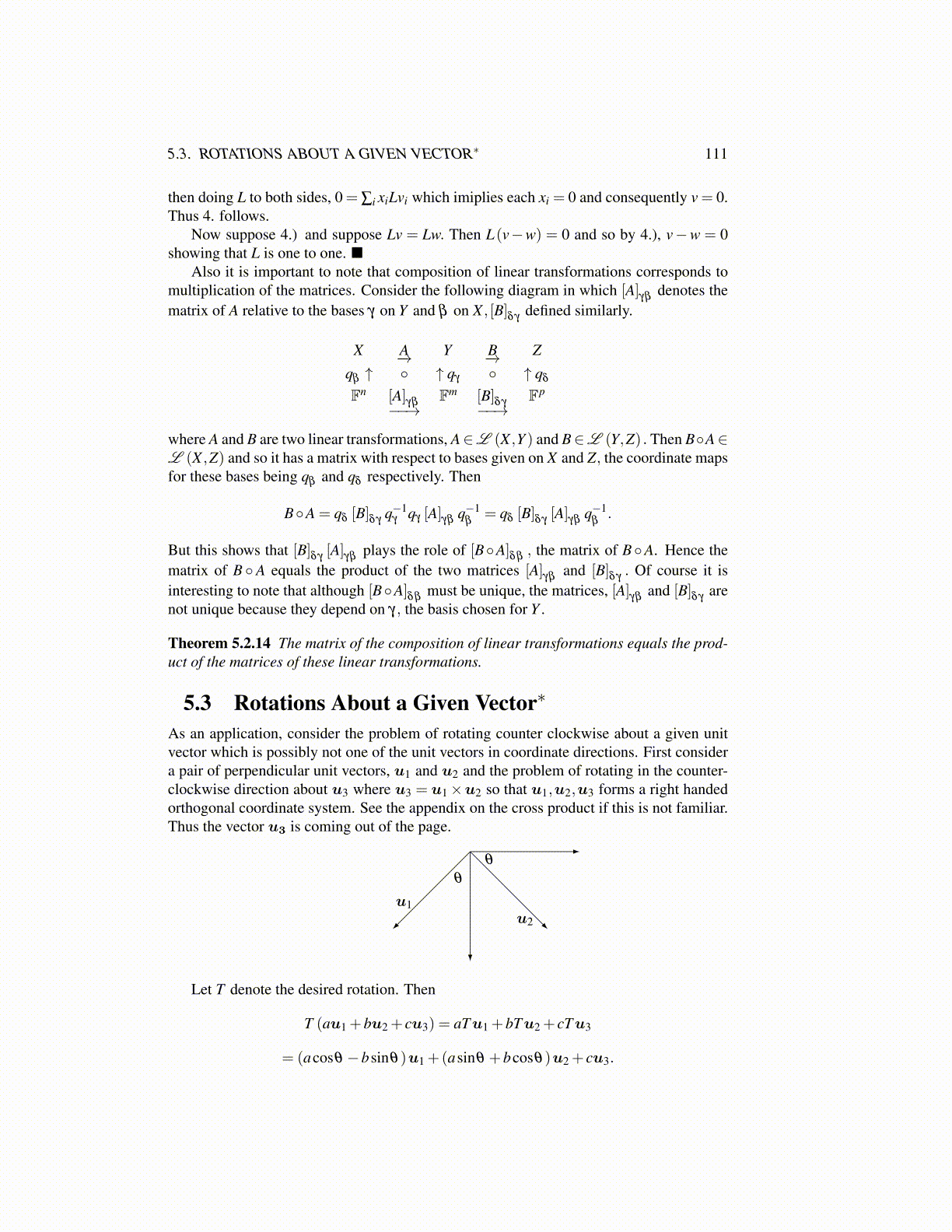
5.3. ROTATIONS ABOUT A GIVEN VECTOR∗ 111
then doing L to both sides, 0 = ∑i xiLvi which imiplies each xi = 0 and consequently v = 0.Thus 4. follows.
Now suppose 4.) and suppose Lv = Lw. Then L(v−w) = 0 and so by 4.), v−w = 0showing that L is one to one. ■
Also it is important to note that composition of linear transformations corresponds tomultiplication of the matrices. Consider the following diagram in which [A]
γβdenotes the
matrix of A relative to the bases γ on Y and β on X , [B]δγ
defined similarly.
X A−→ Y B−→ Z
qβ ↑ ◦ ↑ qγ ◦ ↑ qδ
Fn [A]γβ−−→
Fm [B]δγ−−→
Fp
where A and B are two linear transformations, A∈L (X ,Y ) and B∈L (Y,Z) . Then B◦A∈L (X ,Z) and so it has a matrix with respect to bases given on X and Z, the coordinate mapsfor these bases being qβ and qδ respectively. Then
B◦A = qδ [B]δγq−1
γ qγ [A]γβq−1
β= qδ [B]δγ
[A]γβ
q−1β.
But this shows that [B]δγ[A]
γβplays the role of [B◦A]
δβ, the matrix of B ◦A. Hence the
matrix of B ◦ A equals the product of the two matrices [A]γβ
and [B]δγ. Of course it is
interesting to note that although [B◦A]δβ
must be unique, the matrices, [A]γβ
and [B]δγ
arenot unique because they depend on γ, the basis chosen for Y .
Theorem 5.2.14 The matrix of the composition of linear transformations equals the prod-uct of the matrices of these linear transformations.
5.3 Rotations About a Given Vector∗
As an application, consider the problem of rotating counter clockwise about a given unitvector which is possibly not one of the unit vectors in coordinate directions. First considera pair of perpendicular unit vectors, u1 and u2 and the problem of rotating in the counter-clockwise direction about u3 where u3 = u1×u2 so that u1,u2,u3 forms a right handedorthogonal coordinate system. See the appendix on the cross product if this is not familiar.Thus the vector u3 is coming out of the page.
θ
θ
u1u2
Let T denote the desired rotation. Then
T (au1 +bu2 + cu3) = aTu1 +bTu2 + cTu3
= (acosθ −bsinθ)u1 +(asinθ +bcosθ)u2 + cu3.